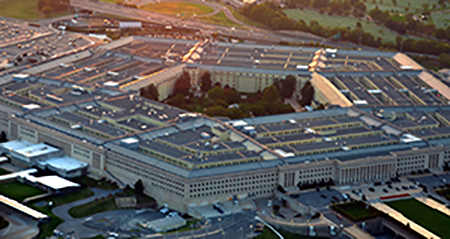Introduction
You have probably learned about types of polygons in your previous math classes. Maybe you have heard about the pentagon pictured below. It’s a very large building that serves as the headquarters of the U.S. military and one of the most well-known polygons in the world. Why do they call it the pentagon? Because it’s a five-sided polygon.

In this unit you will learn the definition of a polygon, names of polygons, and common types.
Following successful completion of this lesson, students will be able to...
- Classify and name two-dimensional figures known as polygons.
- Find the coordinates of the vertices of a polygon formed by lines algebraically and graphically.
Essential Questions
- What are the differences and similarities between squares, rectangles, and rhombi?
- How are parallelograms, kites, and trapezoids different?
- How can you use coordinates to find perimeters and areas of quadrilaterals in the coordinate plane?
- How does the sum of the interior angles of a triangle relate to the sum of the interior angles of polygons?
Enduring Understandings
- Polygons can be classified using properties of sides and angles.
- There is a relationship between the number of sides of a polygon and the sum of its interior angles.
- Each type of quadrilateral has properties that make it unique.
- We can use known properties to verify if a quadrilateral is a parallelogram.
- Different types of quadrilaterals have their own unique properties.
- The two bases of a trapezoid are formed by parallel lines.
- Different types of quadrilaterals have their own unique properties.
- Coordinates can be used to compute perimeter and area of quadrilaterals.
The above objectives correspond with the Alabama Course of Study: Geometry with Data Analysis standards: 3, 29a, 29b, 32, and 31c.